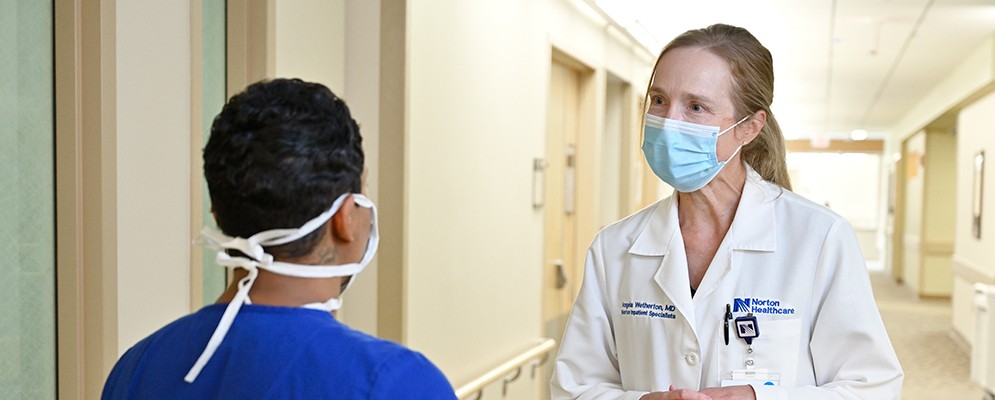
While hospices used to be dominated mostly by non-profits, there's been a noticeable increase in for–profit hospices in both rural and urban areas. Critics argue that for profit hospices use Medicare policies to generate more revenue. Most hospice care is provided in private homes, but some hospice services can also be found in assisted living and skilled nursing facilities. In addition, some states allow hospice care to take place in hospitals.
Non-profit hospice
There are two types American hospices: the nonprofit and the for-profit. Non-profit hospices do not pay taxes on Medicare or Medicaid funds they receive. On the other hand, a for-profit hospice does pay taxes because it is a business and needs to make a profit. Although they are not required by law to give away funds for patient care, for-profit hospices can use these funds to fund other programs and services.
While federal law does not require nonprofit hospices to accept Medicare, regulations must be adhered to in order for them to accept the money. They must also be certified and approved by Medicare. Some nonprofit hospices can go beyond the legal requirements. While for-profit hospices can provide basic services, they are not required to provide training.

For-profit hospice
It is essential to be able to tell the difference between a charitable hospice and one that is for-profit when you choose a hospice. Both have their benefits and drawbacks. While nonprofit hospices often have better patient care, for-profit hospices are less likely to do so. They also have less highly trained staff and have fewer staff members per patient than nonprofit hospices.
Hospice can be an excellent option for those facing end-of-life decisions, but patients can feel disappointed and downed. Many hospitals and health care systems offer transitional programs for patients not ready to receive hospice care. This creates a gap of care in a crucial time.
According to the National Hospice and Palliative Care Association, the hospice industry is worth $19 billion and is almost entirely funded from taxpayer funds. Family caregivers often take care of their loved ones' most basic needs. This has led to an increase in demand. Joy Johnston's experience with her mother moving her bowels changed her perspective on hospice care. Constipation is a common problem for terminal patients.
Medicare hospice
Medicare hospice is a program which allows beneficiaries to receive hospice care. For hospice providers, there are certain requirements. For instance, beneficiaries must meet with their hospice doctors on a regular basis to discuss their care plans. For every 60-day benefit period, these meetings must be held. A beneficiary has the right of appeal if a hospice provider refuses to provide hospice care.

Medicare hospice does NOT cover ambulance and emergency room services. The hospice team will need to arrange those services for their patients, even if the emergency is not directly related to the patient's terminal illness. In such cases, Part D prescription drug coverage remains in effect. This coverage also includes medications that are used to treat pain or symptoms.
Medicare hospice payments in the past were relatively low relative to Medicare's total expenditure. In 1985, Medicare paid approximately $10.3 million for hospice services for around 4,700 beneficiaries. If you multiply the Medicare care for hospice beneficiaries by 0.96, then the net Medicare benefit would be $3.7million, which is still well below the 0.01 Percent threshold.
FAQ
Why do we have to have medical systems?
People in developing nations often do not have access to basic health care. Many people from these areas die before they reach middle-age due to diseases like tuberculosis or malaria.
In developed countries, the majority of people have routine checkups and see their general physicians for minor illnesses. However, many people continue to suffer from chronic conditions like diabetes and heart disease.
What is a healthy system?
Health systems include all aspects related to care, from prevention and rehabilitation to everything in-between. It includes hospitals. clinics. pharmacies. community services. public health, primary and long-term health care. home care. mental health and addictions. palliative, end-of life care. emergency medicine. research, education. financing. and regulation.
Health systems are complex adaptive systems. They are complex adaptive systems with emergent features that cannot always be predicted by looking at each component.
The complexity of health systems makes them difficult to understand and manage. This is where creativity shines.
Creativity helps us find solutions to problems we don't know how to solve. We use our imaginations and creativity to develop new ideas.
Because they are constantly evolving, health systems require people who think creatively.
The ability to think creatively is key to improving the functioning of health systems.
What do you need to know about insurance for health?
Keep track of all your policies if you have health insurance. Make sure you understand your plan and ask questions whenever you have doubts. Ask your provider questions or call customer support if you don't get it.
Remember to take advantage of your plan's deductible when it comes time to use your insurance. Your deductible is the amount that you have to pay before your insurance covers the rest of the bill.
What are the various health care services available?
A health service is a medical facility that offers healthcare services to patients. A hospital is an example. A hospital typically includes several departments like the emergency department and intensive care unit. It also has pharmacy and outpatient clinics.
What's the difference between the healthcare system and health care services, exactly?
Health systems can be more than just providing healthcare services. They include all aspects of what happens within the overall context of people's lives - including education, employment, social security, housing, etc.
Healthcare services, however, are focused on providing medical treatment for specific conditions, such as diabetes or cancer.
They may also refer to the provision of generalist primary care services by community-based practitioners working under the direction of an NHS hospital trust.
How can our health system be improved?
We can improve health care by ensuring that everyone is provided high-quality medical care, no matter where they are located or what their insurance status.
So that children don't get preventable diseases, like rubella, measles and mumps (MMR), we need to ensure that they all receive the required vaccinations.
It is important that we continue to work for lower costs of health care and ensure that it remains affordable to all.
Statistics
- Over the first twenty-five years of this transformation, government contributions to healthcare expenditures have dropped from 36% to 15%, with the burden of managing this decrease falling largely on patients. (en.wikipedia.org)
- For instance, Chinese hospital charges tend toward 50% for drugs, another major percentage for equipment, and a small percentage for healthcare professional fees. (en.wikipedia.org)
- The health share of the Gross domestic product (GDP) is expected to continue its upward trend, reaching 19.9 percent of GDP by 2025. (en.wikipedia.org)
- Price Increases, Aging Push Sector To 20 Percent Of Economy". (en.wikipedia.org)
- Healthcare Occupations PRINTER-FRIENDLY Employment in healthcare occupations is projected to grow 16 percent from 2020 to 2030, much faster than the average for all occupations, adding about 2.6 million new jobs. (bls.gov)
External Links
How To
What are the Key Segments in the Healthcare Industry's Industry?
The healthcare industry includes the following key segments: diagnostics/biotechnology, pharmaceuticals/diagnostics, therapeutics/health information technology, medical device, and equipment.
Defibrillators are blood pressure monitors, blood pressure monitors, stethoscopes or ultrasound machines that can be used to diagnose, prevent, or treat diseases. These products are usually designed to diagnose, prevent, or treat diseases.
Pharmaceuticals are medications that are used to treat or alleviate symptoms. Antibiotics, antihistamines (or contraceptives), are just a few examples.
Diagnostics can be performed by laboratories to detect illness, injury, or other conditions. Examples include blood tests, urine samples, CT scans, MRI scans, X-rays, etc.
Biotechnology is the process of using living organisms (such bacteria) to make useful substances that can be used to benefit humans. Some examples include insulin, vaccines, and enzymes.
Therapeutics are medical treatments that treat diseases or alleviate symptoms. They may include drugs, radiation therapy, or surgical interventions.
Software programs for managing patient records, including health information technology, are used by physicians and their staff. It helps them keep track of which medications they're taking, when they should take them, and whether or not they are working properly.
Anything used to diagnose or treat illnesses and conditions, such as diabetes, is medical equipment. Examples include dialysis machines, pacemakers, ventilators, operating tables, etc.